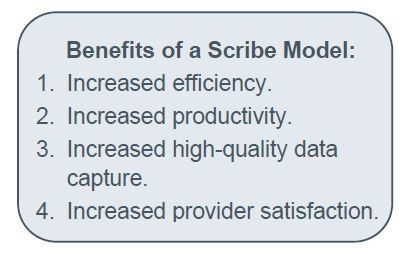
Electronic health records (EHRs), when fully utilized, can facilitate sustained or increased efficiency, productivity, satisfaction, and care quality. However, these highly touted benefits often elude providers that are struggling to transition from paper records, and, as a result, providers are growing increasingly unhappy with EHRs. Fortunately, options are available to ease discontent with EHRs and help providers manage patient records more effectively. Although the use of medical scribes is historically out of favor in many organizations, it is an option that is worthy of renewed consideration. Uniform rejection of this concept may seem like conventional wisdom, but innovative organizations are finding real and measurable benefits from this model.
This article discusses common causes of provider dissatisfaction with EHRs and makes the argument that organizations and providers should consider adopting a scribe model as a means of reducing the burden of documentation on providers, while also increasing physician efficiency and work satisfaction.
A Source of Frustration
In a 2012 survey conducted by AmericanEHR Partners, 37% of clinicians reported dissatisfaction with their EHR. Instead of achieving gains in efficiency and productivity, many providers find themselves feeling trapped in the tedious tasks of EHR documentation. The same 2012 survey revealed that 34% of EHR users were “very dissatisfied” with their workload post-EHR implementation, and nearly one-third of providers had yet to reclaim their pre-EHR productivity levels. Further feeding this growing discontent are points such as:
- Standard EHRs often lack the documentation tools and content that medical and surgical subspecialists require.
- Work flow analysis and redesign are commonly overlooked during EHR implementation, contributing to inefficient processes and poorly leveraged clinical support staff.
- There are widespread and unresolved EHR usability issues, regardless of the vendor or system.
- Providers feel bogged down with data entry duties, which will only increase with expanding regulatory requirements.

To alleviate the need for providers to extend workdays or use weekends to complete their charting, it is commonly recommended that physicians complete their documentation during and immediately after patient visits. Future meaningful use stages actually require that EHRs be used more extensively at the point of care. But many providers, especially those lacking computer proficiency, fear that “pecking” at the keyboard could be disruptive to the physician/patient interaction and, in turn, negatively affect patient satisfaction. So, what can providers do to conquer documentation challenges and effectively integrate EHRs into their practice?
Summon the Scribe
Centuries removed from the stone-tablet scribes of the past, today’s scribes come equipped with smart tablets or laptops and are specifically trained in best practices of medical documentation. Scribes help manage patient records by documenting patient encounters in real time, including physical exams, procedures performed, test results, treatment plans, and follow-up instructions – all under the direct supervision of a provider. By reducing the burden of cumbersome data entry tasks, scribes facilitate provider efficiency, productivity, and satisfaction. More importantly, scribes enable physicians to focus on what they are uniquely qualified to do: provide high-quality care.
Are Scribes Worth the Investment?
Introducing scribes creates additional labor costs, making it vital that organizations investigate the potential benefits, both quantifiable and unquantifiable, as well as drawbacks. Ultimately, relieving providers of documentation duties frees up considerable time that can be devoted to patient care. A case study of scribe use at The Vancouver Clinic, a multispecialty practice in Vancouver, Washington, was presented at the 2013 AMGA Annual Conference and indicated that daily increases in provider productivity and availability, patient encounters, and WRVUs produced revenue and provider compensation gains that exceeded the cost of the scribes. Moreover, employing individuals who are specifically trained and focused on documenting patient encounters in an EHR presents an opportunity to improve the quality and accuracy of electronic records. This can support an organization’s goal to earn financial rewards linked to meaningful use incentives.
Potential benefits that bolster the value of scribes but are less quantifiable include shorter workdays, more detailed patient notes, ensured documentation compliance, expanded use and optimization of the EHR, and enhanced patient and provider satisfaction. In fact, findings from a pilot study recently conducted in community clinics by Shasta Community Health Center and Blue Shield of California Foundation revealed that 36% of patients felt more satisfied with their office visit when a scribe was present.
Of course, the introduction of scribes into the healthcare setting raises many questions. The potential impact on the physician/patient relationship, the consequences of mistakes in data entry, the potential for overreliance on scribes, legal and regulatory implications, and the return on investment all represent aspects of the scribe model that need to be evaluated.
For Your Consideration
The increasing number of scribes in clinical settings suggests that, for many practices, the benefits may very well exceed the cost. However, be aware that there are factors beyond costs that should be considered before utilizing scribes, such as what types of providers make ideal candidates for scribe support, what types of staff should serve as scribes (e.g., medical assistants, nonclinical personnel), regulatory requirements, and how to determine whether a scribe model is an appropriate fit. To prevent excessive proliferation of scribes, groups will have to develop specific cases that define when their services will be allowed.
Not all organizations will benefit from using scribes; practices and needs vary across provider groups and care settings. With that said, we find that there are generally four categories of providers that should seriously consider using scribes: (1) high-volume providers with significant throughput needs, (2) medical and surgical subspecialists who have been overlooked by traditionally designed EHRs, (3) providers that require extensive health histories taken by the physician instead of during the nurse intake process, and (4) physicians who struggle with technology but otherwise provide high-quality, cost-effective care.
Currently, there are no standardized training protocols or background requirements for scribes, and CMS has yet to issue any formal guidelines for scribe use. The Joint Commission offers little guidance other than to note that scribes must work under direct provider supervision and that verbal orders may never be given by or to scribes. The lack of clearly defined rules and guidelines puts the responsibility on organizations to do their due diligence when considering adopting a scribe model.
Because of the ambiguity and complexity, not to mention financial questions, that accompany the adoption of a scribe model, ECG Management Consultants recommends that organizations analytically assess where medical scribes may be viable and in what situations by conducting pilot studies to investigate the costs, benefits, and potential drawbacks. An organization should also evaluate outsourcing alternatives versus internal program development. The experts at ECG possess the knowledge and resources to support provider groups with this analysis and evaluation and can assist in creating policies and strategies that clearly define how scribes will be used, streamlining documentation processes, measuring outcomes, and assessing overall fit.

Conclusion
EHRs offer untold value in eliciting greater efficiency, productivity, and care quality. Still, the documentation requirements that accompany EHR implementation and utilization have created an adversarial relationship between clinician and computer. The result is growing frustration with EHRs. The good news is these negative attitudes are reversible with the right solutions in place. Many organizations will instinctively resist the use of scribes, fearing that they will serve as a crutch, effectively excusing physicians from the hard work of learning how to use the EHR. While this is a risk, we believe that effective analysis and planning can create a strong business case for scribes. By adopting a scribe model, organizations and providers have a significant opportunity to not only improve provider efficiency and productivity, but to realize that their EHR is an asset and tool in quality improvement – not a high-tech liability.

